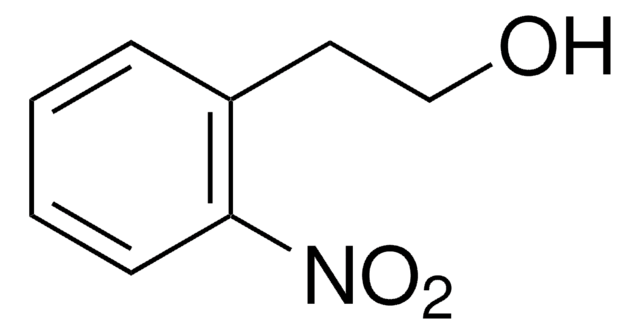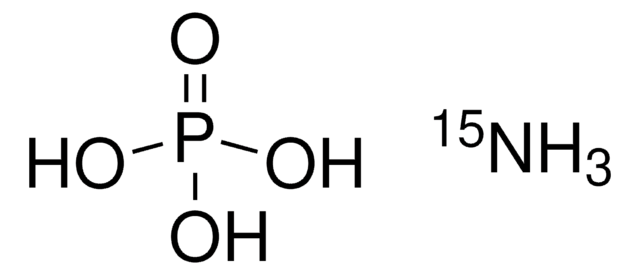204005
Ammonium dihydrogenphosphate
99.999% trace metals basis
Synonym(s):
Ammonium phosphate monobasic, mono-Ammonium phosphate, prim-Ammonium phosphate, Ammonium dihydrogenphosphate
Sign Into View Organizational & Contract Pricing
All Photos(4)
About This Item
Linear Formula:
NH4H2PO4
CAS Number:
Molecular Weight:
115.03
EC Number:
MDL number:
UNSPSC Code:
12352302
PubChem Substance ID:
NACRES:
NA.23
Recommended Products
Quality Level
Assay
99.999% trace metals basis
form
crystalline
impurities
≤15.0 ppm Trace Metal Analysis
mp
190 °C (dec.) (lit.)
application(s)
battery manufacturing
SMILES string
N.OP(O)(O)=O
InChI
1S/H3N.H3O4P/c;1-5(2,3)4/h1H3;(H3,1,2,3,4)
InChI key
LFVGISIMTYGQHF-UHFFFAOYSA-N
Looking for similar products? Visit Product Comparison Guide
Related Categories
General description
Ammonium dihydrogenphosphate is a white crystalline solid widely applied in rechargeable batteries, non-linear optics, and fire-retardant coatings. It is insoluble in ethanol and acetone.
Application
Ammonium dihydrogenphosphate can be used:
- As a precursor to fabricate cathode materials for Li-ion batteries to enhance cyclic performance.
- As an electrolyte additive in rechargeable batteries to enhance the ionic conductivity or to reduce the risk of side reactions within the electrolyte.
- To fabricate flame-retardant polymer composites.
Storage Class Code
13 - Non Combustible Solids
WGK
WGK 1
Flash Point(F)
Not applicable
Flash Point(C)
Not applicable
Personal Protective Equipment
dust mask type N95 (US), Eyeshields, Gloves
Choose from one of the most recent versions:
Already Own This Product?
Find documentation for the products that you have recently purchased in the Document Library.
Customers Also Viewed
Marija Vukomanovic et al.
Journal of nanobiotechnology, 17(1), 21-21 (2019-02-03)
Emerging concepts for designing innovative drugs (i.e., novel generations of antimicrobials) frequently include nanostructures, new materials, and nanoparticles (NPs). Along with numerous advantages, NPs bring limitations, partly because they can limit the analytical techniques used for their biological and in
Eric S Simon et al.
Analytical biochemistry, 377(2), 234-242 (2008-04-09)
Improvements to phosphopeptide enrichment protocols employing titanium dioxide (TiO2) are described and applied to identification of phosphorylation sites on recombinant human cyclin-dependent kinase 2 (CDK2). Titanium dioxide binds phosphopeptides under acidic conditions, and they can be eluted under basic conditions.
Boudin, S. Lii, K-H.
Inorganic Chemistry, 37, 799-799 (1998)
Jun-Young Yang et al.
Clinical chemistry and laboratory medicine, 53(8), 1249-1257 (2015-02-27)
Since the urinary concentration of 4-(methylnitrosamino)-1-(3-pyridyl)-1-butanol (NNAL) is a reliable biomarker of exposure to tobacco smoke, we developed a relatively simple high-throughput chromatographic method to quantify total urinary NNAL concentrations in the general population. The high-throughput analytical method was developed
Nathan K Deed et al.
Applied microbiology and biotechnology, 89(5), 1537-1549 (2011-01-20)
Two deletion mutants expected to be defective in nitrogen catabolite repression (NCR) were constructed in a commercial wine yeast background M2: a ure2 mutant and a dal80 gzf3 double mutant. Wild-type and both mutant strains were fermented in Sauvignon Blanc
Our team of scientists has experience in all areas of research including Life Science, Material Science, Chemical Synthesis, Chromatography, Analytical and many others.
Contact Technical Service





